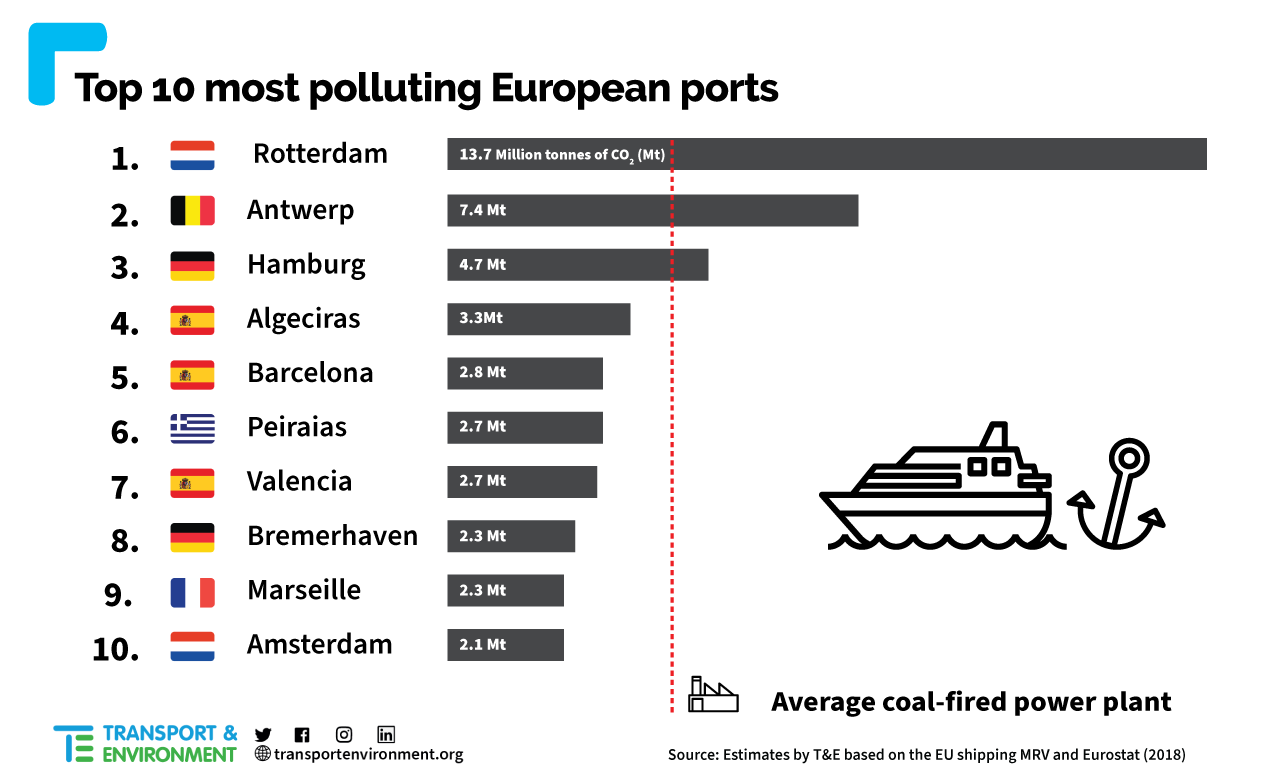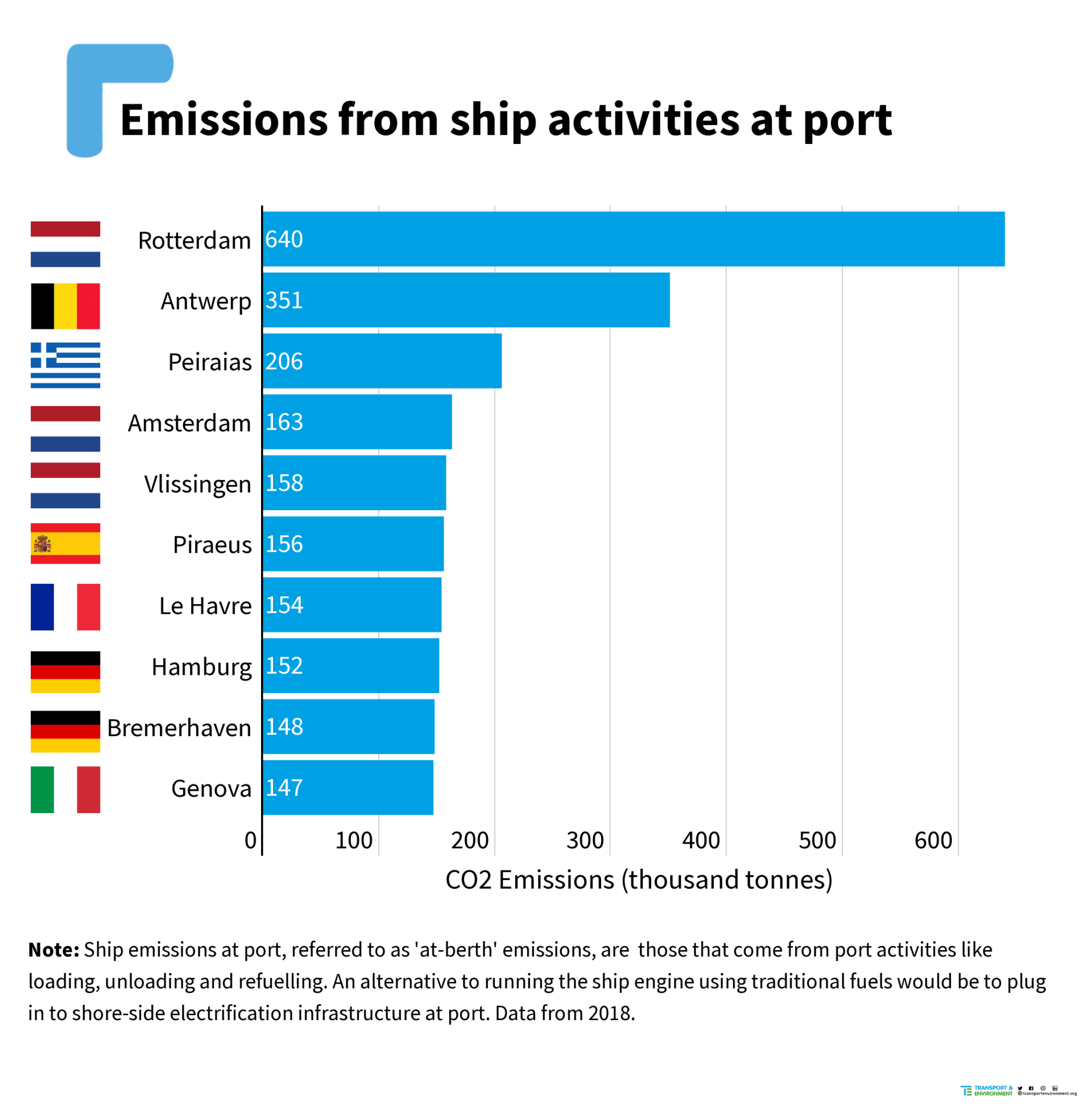T&E published its ranking of Europe’s ports by carbon emissions, putting the spotlight on ports to do more to clean up shipping while industry profits soar.
According to the report, the port of Rotterdam is associated with almost 14 million tonnes of CO2 each year, putting it on a par with Europe’s fifth biggest industrial polluter, the Weisweiler coal power plant in Germany.
Antwerp and Hamburg come in second and third, while three of the top 10 polluting ports are in Spain.
In a year of bumper profits for the industry, Transport & Environment (T&E) calls on ports to get behind EU-wide efforts to reduce shipping’s climate impact
The study, carried out by T&E, assesses carbon emissions from ships departing and entering ports from across the supply chain, as well emissions from activities at port like loading, unloading and refueling. “The shipping industry is a fast-growing emitter and Europe’s ports have been reluctant to back mandates for clean fuels,” says T&E.
 What is more, the post-Covid rebound in trade has seen container shipping prices soar, but even before the pandemic, where data is available, ports were handling more and more goods. Between 2012 and 2019, cargo volumes at Rotterdam, for example, rose 13%.
What is more, the post-Covid rebound in trade has seen container shipping prices soar, but even before the pandemic, where data is available, ports were handling more and more goods. Between 2012 and 2019, cargo volumes at Rotterdam, for example, rose 13%.
With container profits at an all time high last year and shipping companies with profits rivalling even those of Apple and Facebook, ports are expected to have had a lucrative year in 2021, too.
The shipping industry is making a killing right now. Ports are at the heart of this and their climate impact is enormous
Jacob Armstrong, sustainable shipping officer at T&E, stated.
Data from ship emissions at ports is also damning, with Rotterdam once again scoring worst with important port metropoles such as Antwerp, Piraeus (Athens), Barcelona and Hamburg also scoring badly on emissions from port activities like loading, unloading and refuelling.

Despite this, T&E says, “port lobbyists have argued against stricter targets for shore-side electrification which would eliminate pollution in ports and have lobbied against such targets for shipping segments like oil tankers and bulk carriers.”
Ports can have a direct impact in greening our planet by providing clean shipping infrastructure. This means installing hydrogen-based refueling infrastructure and shore-side electrification that would allow ships to turn off their engines and plug in at port
Jacob Armstrong concluded.
The European Commission can help ports by directing revenues from the forthcoming carbon market to clean fuel infrastructure in ports, advises T&E, adding that the EU’s green infrastructure law (AFIR) is currently under discussion in the European Parliament and the Council, with a final text expected in the second half of 2022.
Recommendations
- Ensure that at least half, ideally, all inbound and outbound shipping emissions are covered by the EU Emissions Trading Scheme.
- Require all European ports to provide shore-side electricity (SSE) to ships at berth: From 2025 at all passenger terminals; From 2030 at all terminals for containerships, tankers and refrigerated-bulk carriers; From 2035 at all remaining terminals.
- Discontinue the mandate on maritime ports to install LNG infrastructure, to avoid stranded
assets in fossil fuels.































































